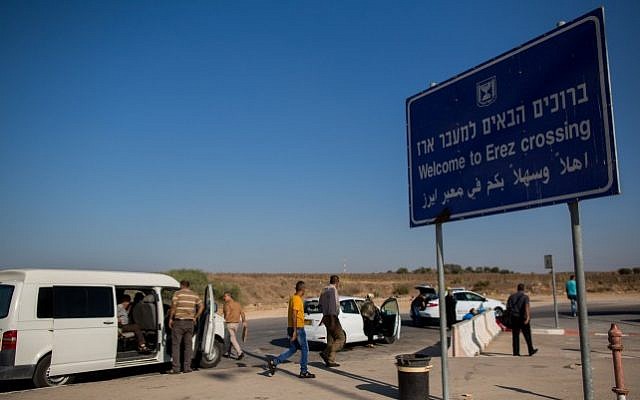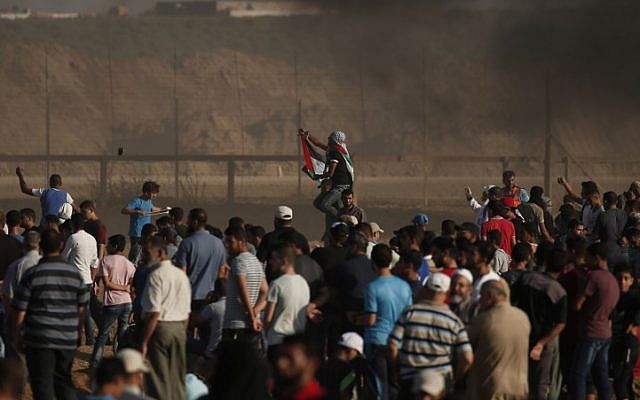Israeli authorities reportedly tell Hamas they will close the Erez Crossing on Sunday, despite parallel reports of progress towards a ceasefire deal

Palestinian media sources reported late Saturday night that Israel plans to close the Erez Crossing on the Gaza Strip’s northern border, despite parallel reports of progress towards a long-term ceasefire agreement between Hamas and Israel.
In a surprise announcement, Israel told the Hamas terror group controlling the Gaza strip that it will close the border crossing on Sunday morning, several Palestinian news sites in both Gaza and the West Bank claimed.
Israeli authorities reportedly declined to say how long the closure would last.
The border crossing, which acts as the only pedestrian crossing between the Gaza Strip and Israel, would still be open for medical emergencies requiring the transfer of Gazans to Israeli hospitals, according to the reports.
The closure comes as senior members of Hamas say that negotiations for a long-term ceasefire deal are in “the final stretch.”
Last week, the Lebanon-based Al-Mayadeen TV channel reported that the long-term deal taking shape will last for a year and see the establishment of a cargo shipping connection between Gaza and Cyprus. Israel will have security control over the sea traffic between the Palestinian coastal enclave and Cyprus, according to the report, which cited sources familiar with the details.
On Friday thousands of Gazans demonstrated along the Israeli border near the Erez Crossing in weekly Hamas-backed ‘March of Return’ demonstrations. Hamas leaders had urged the public to participate in Friday’s protests.
Rioters hurled rocks, improvised bombs and Molotov cocktails at soldiers and burned tires to create a smokescreen. Others launched incendiary balloons towards Israel.
The Hamas-run health ministry in Gaza reported that two men had been killed and around 250 injured, of which at least 25 were said hit by live fire.

Recent months have seen repeated rounds of intense violence between Israel and Hamas, along with weekly border protests at the Gaza border that have regularly included rioting, attacks on Israeli troops and attempts to infiltrate and sabotage the border fence.
At least 160 Palestinians have been killed by Israeli fire since the weekly protests began, a Hamas ministry says. Hamas has acknowledged that dozens of those killed were its members.
One Israeli soldier was shot dead by a Palestinian sniper.
In addition to the border clashes, southern Israel has experienced hundreds of fires as a result of incendiary kites and balloons flown over the border from Gaza. Over 7,000 acres of land have been burned, causing millions of shekels in damages, according to Israeli officials.
Hamas has long made access to a sea port a key strategic goal. Under the conditions of Israel’s naval blockade, goods heading to Gaza are currently shipped to Israeli ports and then trucked into Gaza.
Israel has imposed a blockade on Gaza since Hamas, which is sworn to Israel’s destruction, seized the territory from the Palestinian Authority. It says the blockade is in place in order to prevent weapons and other military equipment from entering the Strip.
As reported by The Times of Israel
